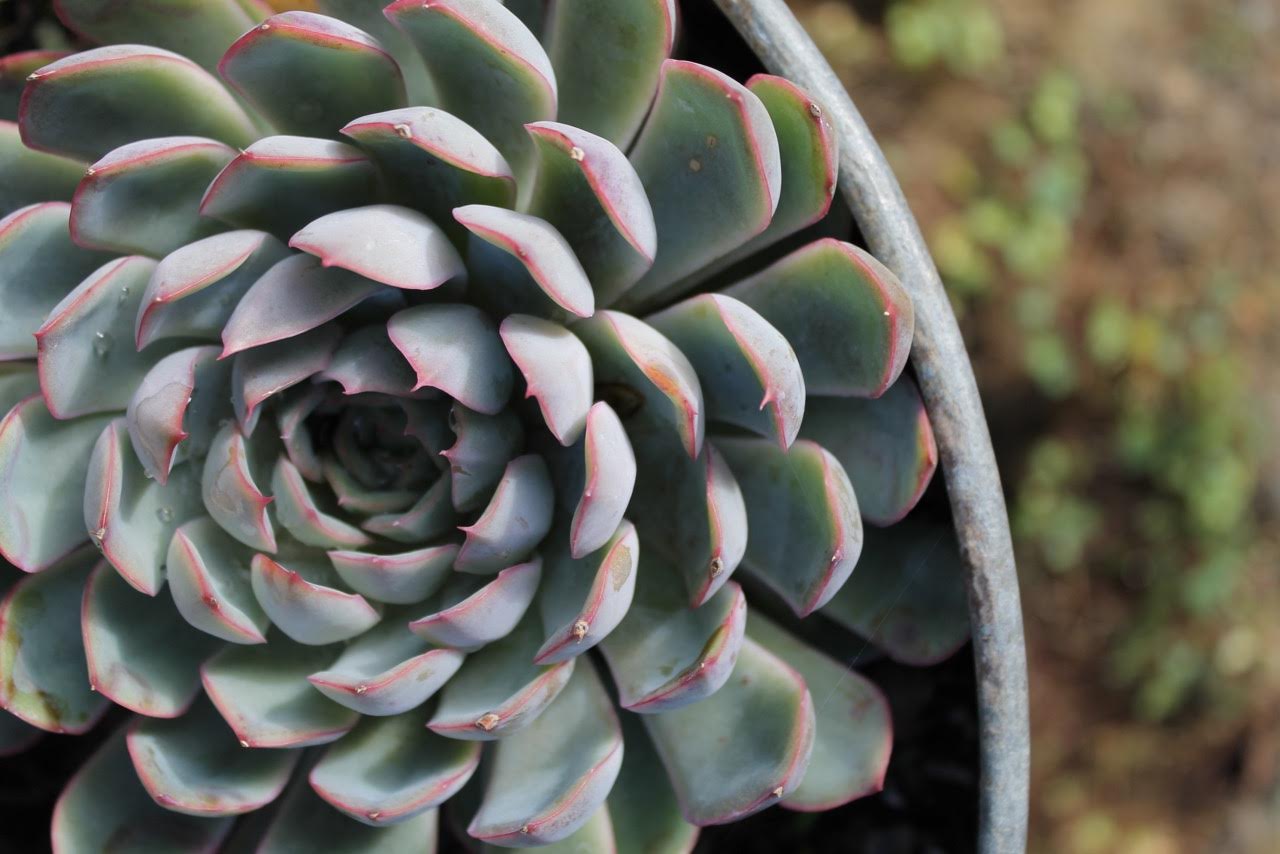I’ve been missing writing my weekly gardening column in the Telegraph (replaced by a monthly interiors piece) so much I thought I’d spend a little longer on my blog. I’d been planning to document the succulent’s overnight success from secret passion to omnipresent media top plant, to show off my collection and pass on the tips I’ve amassed from other succulent geeks.
While I can boast modest success in the garden, I’m the kiss of death to houseplants. Perhaps it’s their total reliance on me I resent. The sole survivors of my lifetime indoor plant collection are succulents. As a genus, they’re a complicated family, but many are easy to grow in specific locations. Both tender glasshouse and hardy garden varieties are strangely addictive, and for me, a visit to a garden or nursery is not complete without a new purchase to add to my collection. And there are thousands to choose from.
Apart from groaning shelves of tender echeverias, agaves and crassulas sheltering in my porch, I also admit to a penchant for the hardier sempervivums and sedums that’ll survive anywhere outside: in pans, on roofs or – my latest venture – in gravel beds like living Persian carpets edged with reclaimed barleycorn twist tiles, to either side of my front door.
Crassulaceae are accommodating plants, easy to propagate by plucking offsets or big leaves, leaving the wounds to callous over for at least a day, then potting up to pass on to other succulent geeks. Adapted to withstand a wide range of temperatures and conditions, their fleshy stems and leaves act as water storage containers to minimize evaporation, which is why they survive despite periodic neglect.
With flowers like riotous fireworks in bright orange, yellow and red, that seem to appear overnight on long shooting stems, some are monocarpic with rosettes that die after flowering, throwing out little ‘chicks’ that root and spread. The variation of leaf colour and texture is mind-blowing: from powdery blue to downy grey, near black to floury white, while some have frilly petticoats or sculptured rosettes, reflecting their South American roots.
I start the year with a daylong spring clean of my porch’s occupants, tidying away any dead leaves and re-potting each plant in new gritty compost. I recently heard a fellow succulent geek boast her growing medium was one part John Innes no 2, one part grit and one part Tesco cat litter. I dust each plant with an old blusher brush, and dot any mealy bugs with a fine artist’s paintbrush laden with meths, then cover the surface of the pot soil with gravel to discourage vine weevil.
One of the main reasons for succulents’ success is their ability to look wonderful in unusual containers. Match their leaves with grey lead and galvanized steel, rough concrete and stone, as well as the usual terracotta. I’ve seen them in wellington boots, in saucepans and even plastic dinasaurs. Trawl charity shops, car boot sales and re-use food containers. Make sure there are adequate drainage holes by puncturing the bottoms with a Phillip’s screwdriver powered with a heavy hammer, or in hardcore metal situations with a strong power drill bit.
BEST OF THE BUNCH
- Sedum morganianum known as Burro’s Tail with fleshy green hanging dreadlocks
- Sempervivum ‘Blue Boy’ grey green and S. Atropurpureum: dark purple.
- Echeveria ‘Perle von Nurnberg: pearly purple, E. ‘Meridian’ with pink edged ruffles.
- Agave Porcupine – a flat grey artichoke-like rosette that grows 30 inches wide.
- Aeonium ‘Zwartkop’: tree-like, with maroon/black rosettes.
LOOKING AFTER INDOOR SUCCULENTS
- Succulents thrive on benign neglect.
- Most need a sunny bright warm spot with adequate ventilation.
- Some appreciate a summer holiday outdoors.
- Grow in containers in John Innes no 2 with 40% horticultural grit.
- Watch out for tufty white mealy bugs, and treat with meths or liquid soap applied with a paintbrush.
- Always allow soil to dry out before watering, and don’t leave the pots sitting in water.
- Feed monthly in early spring and summer with proprietary cactus feed.
- Stop watering altogether in winter, especially in a non-centrally heated situation.
- Water with rainwater to prevent mineral build-up on leaves.
SUPPLIERS
- Urbanjungle.uk.com for website and great nursery in Norfolk.
- Blueleafplants.co.uk for a stylish selection.
- Fernwood-nursery.co.uk website and National collection of sempervivums.
- Surrealsucculents.co.uk – Cornish nursery website.






